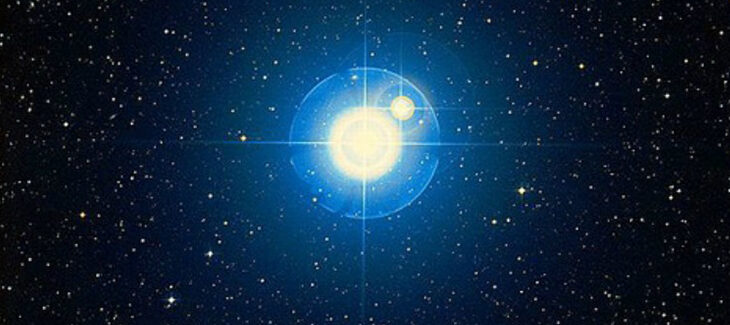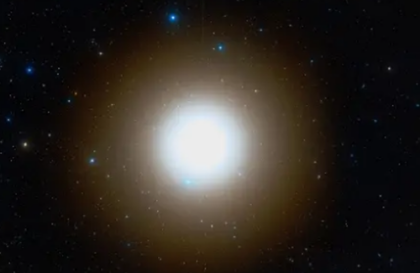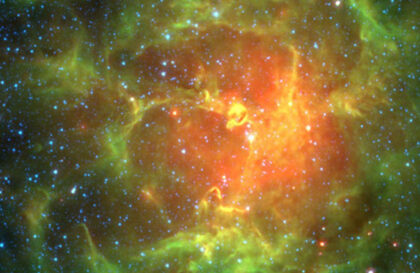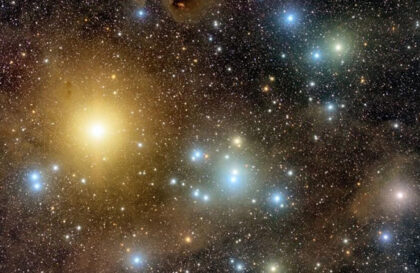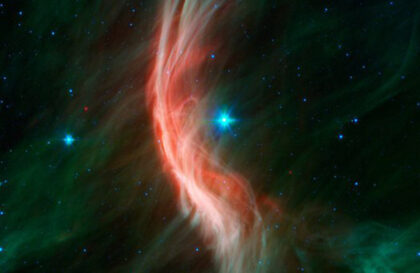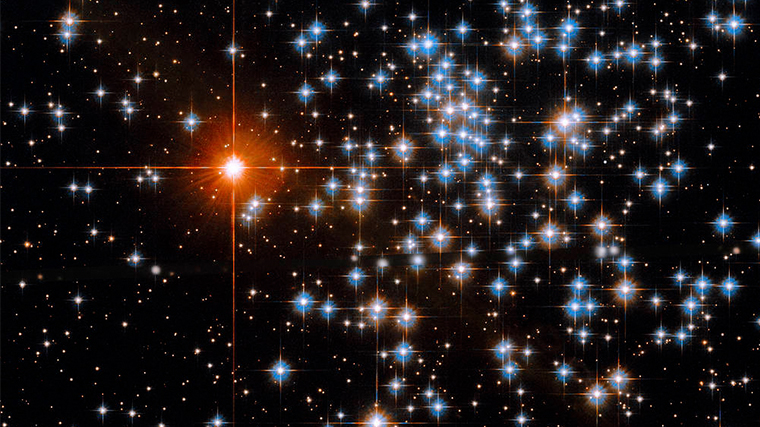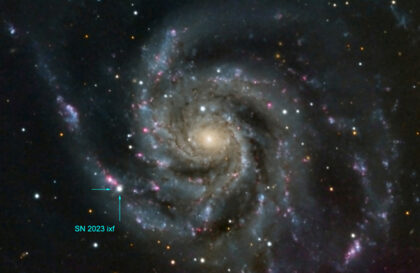Libra is located in the southern part of the sky and is one of the twelve zodiac constellations, known for its unique shape similar to the scales. In ancient Greek and Roman mythology, the constellation was associated with Themis, the goddess of balance and justice, and was used as a symbol of impartiality.
The name “Libra” derives from the Latin root meaning “weights”, reflecting its historical role in commerce and trade. Libra is a constellation located between the constellations of Scorpio and Virgo. It can be observed in the night sky from March to July in the Northern Hemisphere and from September to January in the Southern Hemisphere. Its strategic location allows it to be seen from almost anywhere globally, and its unique configuration and shining stars can recognize it. In addition, this constellation is home to several notable celestial bodies, including the globular cluster NGC 5897 and the spiral galaxy NGC 5701.
Stars in the constellation Libra
Maps created with Stellarium by AstroBob. Used with permission.
Zubenelgenubi, also called Alpha Libra, is the brightest star in the constellation Libra. This star system consists of two stars that orbit each other, making it a binary star system. The primary star is classified as a blue-white subgiant, while the secondary star is a yellow-white dwarf. Alpha Libra can be found near the ecliptic, the path the Sun takes across the sky. This particular star can be located about 77 light-years from Earth and has a magnitude of 2.75, so it can be seen with the naked eye.
Zubeneshamali, also called Beta Libra, is the second brightest star in the constellation Libra. It is a blue-white main sequence star located approximately 160 light-years from our planet. Beta Libra is also a binary star system where two stars orbit a common center. The leading star is a blue-white subgiant; the second is a white dwarf. Its magnitude is 2.61, slightly larger than that of Alpha Libra.
Gamma Libra, or Zubenelacrab, located approximately 152 light years from Earth, is a binary star system. This star system is the third brightest entity in the constellation Libra.
The star Methuselah in the constellation Libra
Credit: Digitized Sky Survey (DSS), STScI/AURA, Palomar/Caltech, and UKSTU/AAO; Science: NASA, ESA, and H. Bond (STScI and Pennsylvania State University), E. Nelan (STScI), D. VandenBerg (University of Victoria), G. Schaefer (CHARA, Mt. Wilson Observatory), and D. Harmer (NOAO)
The star Methuselah, also called HD 140283, is located in the constellation Libra. It was discovered by the American astronomer Henry Norris Russell in 1914. The age of this star is believed to be approximately 14.5 billion years, making it one of the oldest existing celestial bodies. Methuselah is classified as a subgiant star, indicating that it has consumed most of its hydrogen fuel and is undergoing the process of becoming a red giant. With a mass about 0.8 times that of the Sun, the surface temperature is about 5600 Kelvin.
Exoplanets in the constellation Libra
Located outside our solar system, the constellation Libra is home to various exoplanets. Astronomers have identified many exoplanets in this constellation and beyond since the discovery of the first exoplanet in 1995. These exoplanets differ in size, composition, and proximity to their respective stars. Famous discovefindings constellation Libra include HD 140283 b, HD 134606 b, and HD 137388 b. Careful study of these planets allowed us to understand their unique attributes and features better.
Gliese 581 d and HD 40307 g have been recognized as potentially habitable among the exoplanets in the constellation Libra.
Credit: ESO/L. Calçada
The Gliese 581 planetary system now has four known planets, with masses of about 1.9 (planet e, left in the foreground), 16 (planet b, nearest to the star), 5 (planet c, centre), and 7 Earth-masses (planet d, with the bluish colour). The planet furthest out, Gliese 581d, orbits its host star in 66.8 days, while Gliese 581 e completes its orbit in 3.15 days.
The PLATO mission, developed by the European Space Agency and expected to launch in 2026, will explore exoplanets in the habitable zones around their stars.
Banner image: Zubenelgenubi looks like one star to the eye, but it’s actually 2 stars. Credit: AAO/ STScI/ WikiSky.
Image credit:
https://earthsky.org
https://earthsky.org
https://hubblesite.org
https://exoplanets.nasa.gov
